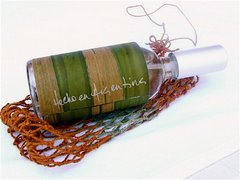Argentine Cuisine
.jpg) Argentina is a vast country which offers an exciting variety of flavours and culinary influences depending on which of the 26 provinces you decide to stop at for a meal. As is the case in most countries, its history has had a direct effect on its culinary culture. Many of our traditional dishes come from our colonizers, the Spanish, but also from immigrants arriving at this extreme southern region throughout the 19th and early 20th centuries.
Argentina is a vast country which offers an exciting variety of flavours and culinary influences depending on which of the 26 provinces you decide to stop at for a meal. As is the case in most countries, its history has had a direct effect on its culinary culture. Many of our traditional dishes come from our colonizers, the Spanish, but also from immigrants arriving at this extreme southern region throughout the 19th and early 20th centuries.
Before the arrival of the Europeans, there were two main indigenous groups: the Diaguita in the northwest and the Guarani in the Mesopotamic region. The latter, were primarily nomadic hunters, whilst the northwestern communities were agricultural and cultivated maize. The local Indians introduced the use of foods such as corn, squash and sweet potatoes.
The second major influence was the wide-range immigration phenomenon. The Europeans arrived massively: Italians (aprox. 50% of the total immigrants), Spanish, French, Germans, Eastern Europeans... With them came their culinary habits and tastes. They introduced foods such as Italian Pasta, French style bread instead of tortillas and seasonings such as parsley, fresh oregano, paprika, thyme and bay leaves. Italian sailors arrived in Argentina's ports and settled here founding a large number of Italian neighborhoods and restaurants.
 Argentina is best known for its beef. Argentine beef is highly prized for its flavor and tenderness. Cattle were introduced in the 16th century. The creation of huge cattle ranches, known as haciendas, gave birth to the “gaucho” who were the descendents of early Spanish (Andalusian) settlers who had mixed with local Indian women.
Argentina is best known for its beef. Argentine beef is highly prized for its flavor and tenderness. Cattle were introduced in the 16th century. The creation of huge cattle ranches, known as haciendas, gave birth to the “gaucho” who were the descendents of early Spanish (Andalusian) settlers who had mixed with local Indian women.
The cooking method of choice in Argentina is grilling. Beef steaks, sweetbreads and kidneys sizzle over the fire, along with vegetables, fish and the renowned “chorizo”.
But a strong European influence is still evident. Chicken, Lamb, pork and offal are popular along with beef. Argentine cooking is, on the whole, less spicy than that of its South American neighbours, with sweet peppers, tomatoes, herbs and onions being widely used as savouring rather than chilies.
In each region the different climatic conditions and the richness of its soils allowed for the growth of different natural products. For example, the cuisine in the north is spicier than that in the south, especially along the costal regions, where seafood and fish are often cooked European style with garlic, olive oil, herbs and white wine.
Empanadas are a typical food: a pastry with a filling (corn, meat, chicken, tuna), and these differ according to the regions both in their fillings and styles.
Join Maneras Argentinas Cooking Lessons to have a closer approach to Traditional Argentine Cooking.





No comments:
Post a Comment